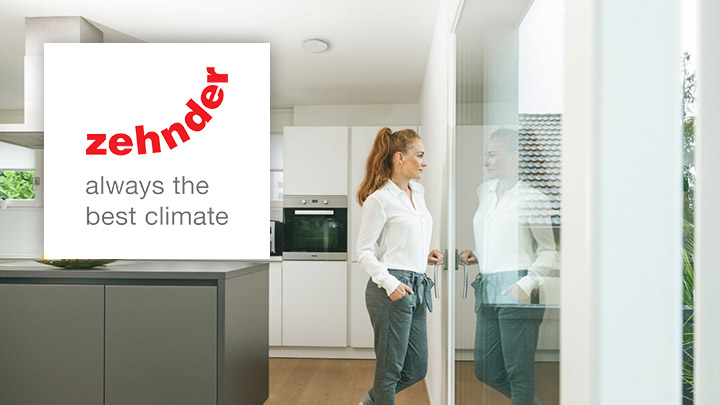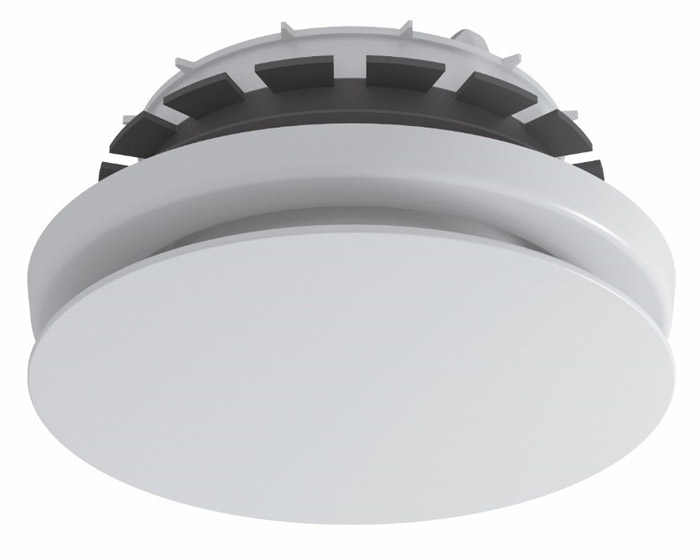To ensure proper air circulation in the room, it is worth considering installing an appropriate anemostat . It is most often mounted on walls or ceilings. Customers choose an anemostat not only for practical reasons, but also for decorative reasons, because it hides unsightly parts of the ventilation . You already know that there are plenty of models available on the market. So find out which of them are especially worth your attention!

Anemostat or ventilation grille? How do they differ?
Until now, ordinary ventilation grilles were used in houses and apartments. Today, anemostats are becoming more and more popular. What is the difference? The outlet of the gravity ventilation system ends with a grille, which means that it serves as a vent and vent. When it comes to the mechanical installation system, in this case a supply anemostat or exhaust anemostat can be used. The principle of operation of this system is therefore slightly different, because air circulation is possible even with very tight windows. Moreover, it is also possible to use the heat from the exhaust air.
In the case of supply and exhaust elements, an important issue is the regulation of the amount of air flow and its direction. This way, it is possible to control the operation of the ventilation system, which translates into comfort of use.
See anemostats at the Onninen wholesaler
Types of anemostats

Mechanical ventilation consists of many elements, but anemostats are responsible for supplying fresh air and removing stale air. They can be divided into supply and exhaust air. Let's take a closer look at them using examples of Zehnder products.
Zehnder ComfoValve Luna S supply air diffuser
Thanks to the optimized airflow behavior (Coanda effect), the anemostat meets the highest requirements in terms of ventilation comfort and operating noise (up to 50 m3/h). It can be mounted both in the ceiling and in the wall. The correct amount of air can be set using the 25 available settings of the adjustable flow cone, optimized for flow. This undoubtedly saves time during installation and commissioning.
Despite different volume flow settings, the valve height remains unchanged (30mm), so it fits perfectly into any interior. The optimal installation of the diffuser takes into account the distance from the wall, which is at least 350 mm. If a 360-degree airflow is undesirable, you can purchase a directional insert that limits the airflow angle to 240°.
Zehnder ComfoValve Luna E exhaust air diffuser
The ComfoValve Luna E exhaust diffuser is characterized by intuitive installation that does not require the use of any tools. The installation height, as in the case of Luna S, is only 30 mm, regardless of the selected air volume setting (up to 75 m3/h). This discreet appearance allows harmonious integration into any interior.
As many as 75 rasterized adjustment positions enable extremely precise adjustment of the air volume. Thanks to them, you can read the setting position and document it in the appropriate fields on the back of the diffuser during commissioning. The air volume setting is characterized by a specially developed lock, which prevents accidental changes.
The technical advantages of the Zehnder ComfoValve Luna E exhaust diffuser go hand in hand with its unique design. Like Luna S, the device is characterized by high quality, durability, and resistance to scratches and UV rays.
The perfect solution that will ensure the perfect atmosphere in any interior
Thanks to their harmonious and matching design, the above-mentioned diffusers can be combined in open spaces, e.g. in the kitchen, dining room and living room. The discreet shape combined with the constant installation height of both diffusers allows integration in any ventilated room.
It is worth noting that you will find another type of these devices on the market. The supply and exhaust diffuser is very universal, but is used quite rarely. It does not fulfill its function of supporting air flow in one direction. This variant may work in some rooms, but specialists always recommend installing directional models.
Check out the Zehnder brand zone in Onninen
Supply and exhaust diffusers - application
Diffusers are installed wherever it is necessary to support the mechanical ventilation system. Their arrangement and the width of the air inlet and outlet are decided by the installer who makes the necessary measurements. Proper adjustment of the diffusers is only possible by taking into account such variables as:
- assumed number of people using the rooms,
- possibility of creating drafts,
- supply and exhaust air,
- room temperature.
Typically, the ventilation system requires the use of anemostats in interiors such as:
- Rooms with high humidity - these include the kitchen, bathroom and toilet. What should you consider when choosing the right device? Take into account its resistance to moisture and corrosion.
- Large rooms - numerous anemostats are usually placed in the ceiling, where the entire ventilation system runs. Examples of such interiors include spacious living rooms and office buildings with open spaces.
- Rooms with a fireplace - the anemostat is most often mounted on the top of the fireplace hood after creating an appropriate partition.
When looking for high-quality diffusers, be sure to check out the wide offer of our online wholesaler!
